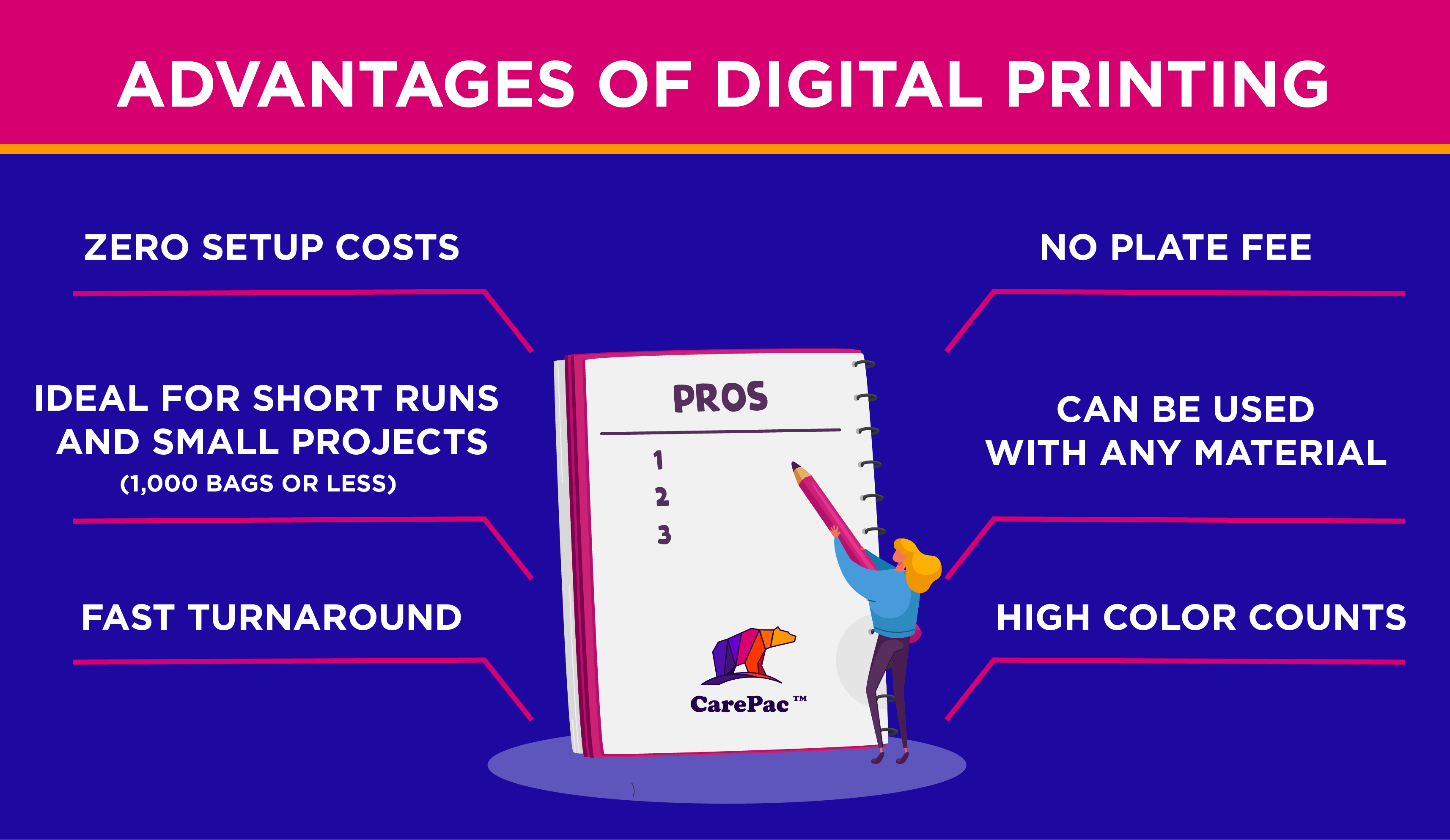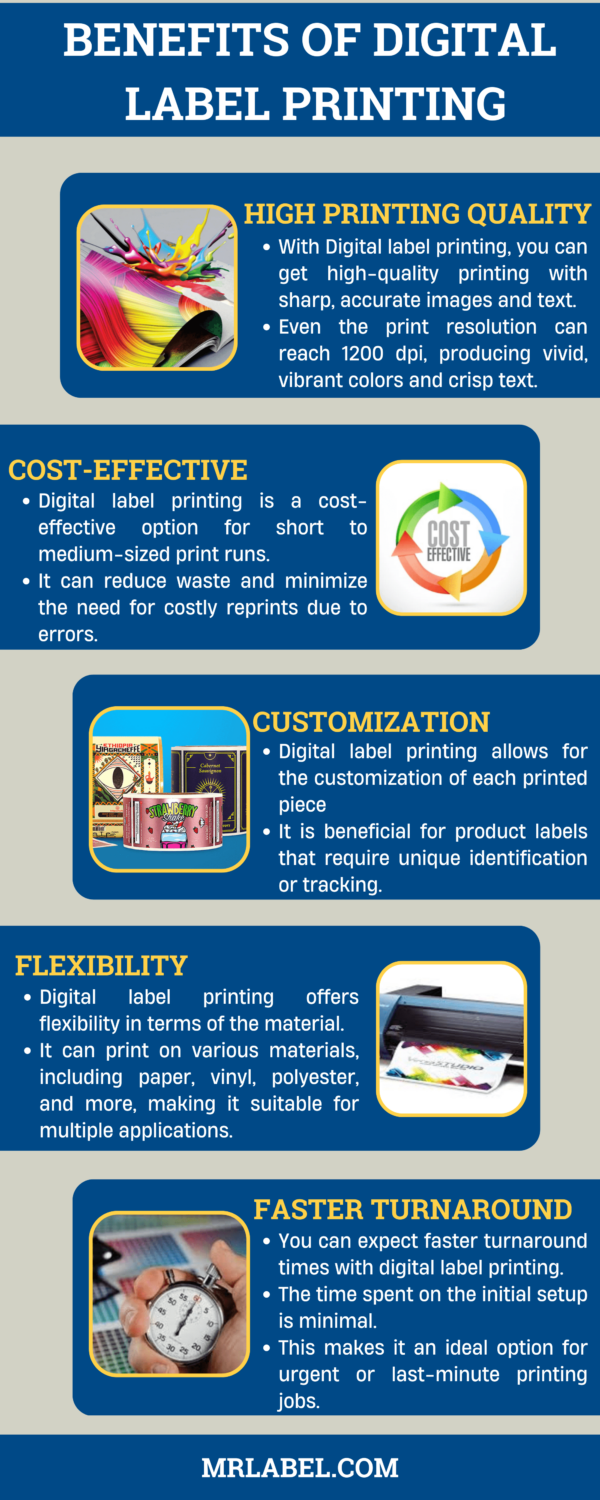Indicators on Digital Printing You Should Know
Indicators on Digital Printing You Should Know
Blog Article
The Best Guide To Digital Printing
Table of ContentsNot known Details About Digital Printing The Main Principles Of Digital Printing The Buzz on Digital PrintingDigital Printing Can Be Fun For AnyoneDigital Printing Things To Know Before You BuyThe Greatest Guide To Digital Printing
Variable information printing, such as straight mail with customized codes and addresses, is ideally suited for electronic printing. Digital fast printing only requires 4 steps of layout, review, printing and binding to obtain everything done. Digital quick printing has an unparalleled benefit: print on demand.According to PMMI, electronic printing permits brands and suppliers to react swiftly to consumer demands while boosting the supply chain, decreasing warehousing expense and waste, and taking pleasure in faster time to market. That all noises fantastic, but how does this modern technology do all that? The significant differentiator of these modern technologies is that there are no set-up costs and no plates with electronic printing.
Digital Printing Can Be Fun For Everyone
According to Wikipedia, the greatest difference between electronic printing and typical techniques such as lithography, flexography, gravure, or letterpress - Digital Printing is that there is no demand to change printing plates in electronic printing, whereas in these analog printing methods home plates are repetitively changed. This leads to quicker turn-around time and reduces cost when making use of digital printing.
Quick production suggests getting your item to market quicker. It likewise indicates it's much easier and faster to make adjustments later, when you change a dish, include a SKU, or create seasonal product packaging. Digital printing is very versatile, so it's easy to make changes to the package layout swiftly. It all goes back to home plates.
With standard printing methods, short-run printing is just not feasible. Because a wonderful style can make or break your product, electronic printing constantly creates high-quality, clear and colorful graphics each time.
Digital printing is the process of printing digital-based pictures directly onto a variety of media substratums. There is no requirement for a printing plate, unlike with countered printing. Digital data such as PDFs or desktop posting files can be sent out straight to the digital printing press to publish theoretically, photo paper, canvas, material, synthetics, cardstock and other substratums.
Digital Printing Things To Know Before You Get This
According to PMMI, electronic printing enables brand names and suppliers to respond promptly to customer needs while boosting the supply chain, decreasing warehousing expense and waste, and appreciating faster time to market. That all sounds great, but just how does this modern technology do all that? The significant differentiator of these modern technologies is that there are no set up costs and no plates with digital printing.
According to Wikipedia, the best difference in between electronic printing and typical methods such as lithography, flexography, gravure, or letterpress is that there is no demand to replace printing plates in digital printing, whereas in these analog printing methods home plates are repetitively changed. This causes quicker turn-around time and decreases price when using electronic printing.

Digital Printing - An Overview
With traditional printing methods, short-run printing is simply not possible. Due to the fact that a great layout can make or break your item, electronic printing constantly produces high-quality, clear and vivid graphics each time.

According to PMMI, electronic printing enables brand names and makers to react rapidly to consumer demands while boosting the supply chain, reducing warehousing expense and waste, review and taking pleasure in faster time to market. That all sounds terrific, but exactly how does this innovation do all that? The major differentiator of these technologies is that there are no set-up fees and no plates with digital printing.
The smart Trick of Digital Printing That Nobody is Talking About
According to Wikipedia, the best difference in between digital printing and standard methods such as lithography, flexography, gravure, or letterpress is that there is no demand to change printing plates in electronic printing, whereas in these analog printing techniques home plates are repetitively changed. This causes quicker turnaround time and decreases expense when making use of digital printing.
Rapid manufacturing suggests getting your item to market faster. It also indicates it's simpler and faster to make changes later on, when you alter a recipe, include a SKU, or produce seasonal packaging. Digital printing is extremely versatile, so it's very easy to make adjustments to the bundle style rapidly. All of it goes back to home plates.

The 2-Minute Rule for Digital Printing
Digital printing is the process of printing digital-based images straight onto a range of media substrates. There is no need for a printing plate, unlike with countered printing. Digital documents such as PDFs or desktop posting data can be sent directly to the electronic printing press to publish on paper, image paper, canvas, textile, synthetics, cardstock and other substrates.
Report this page